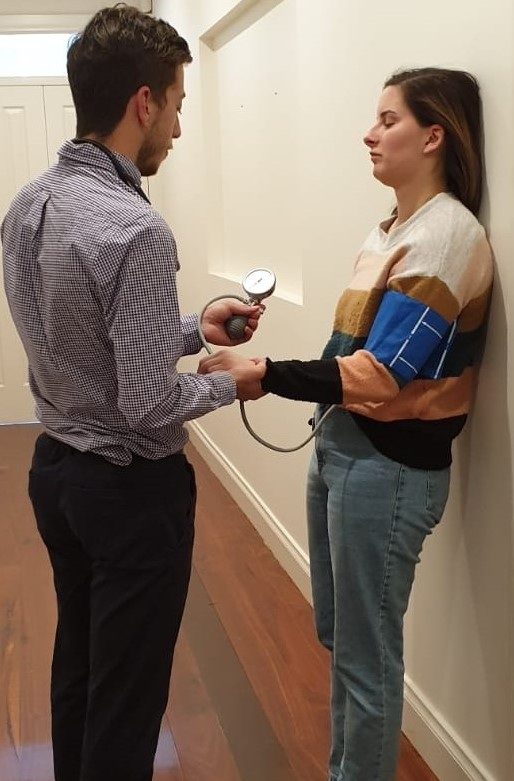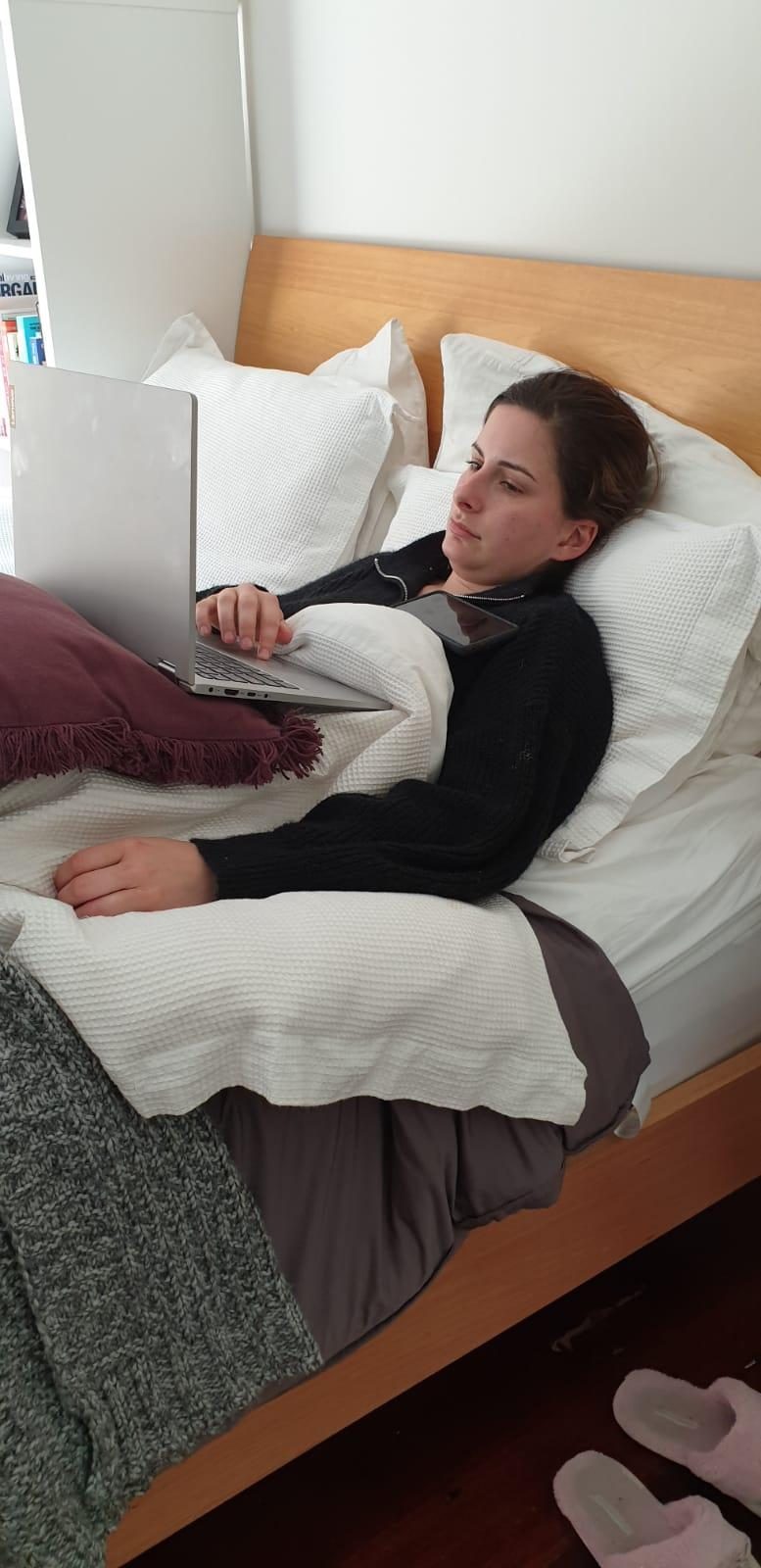Orthostatic Intolerance (OI)
OI is an inability to function when upright, due to reduced blood flow to the brain.

...the weight of the evidence now suggests that all subjects with [ME] CFS deserve careful assessment of their heart rate, blood pressure, and symptomatic responses to at least 10 minutes of quiet upright posture.
Dr P C Rowe, Johns Hopkins University, Solve ME, 5 Sept 2014
Orthostatic intolerance
Orthostatic intolerance (OI), an aspect of autonomic nervous system dysfunction, is the inability to function physically or cognitively when standing or sitting up. It is relieved only by lying down. For someone who is severely ill, an incline of only 20% has been shown to induce symptoms of OI.
OI comes in many forms. The three most commonly identified in ME/CFS are:
- postural orthostatic tachycardia syndrome (POTS): a significant increase in heart rate when upright
- neurally mediated hypotension (NMH): a drop in blood pressure when upright
- delayed orthostatic hypotension (Delayed OH): a drop in blood pressure that develops more than 3 minutes after being upright
OI in ME/CFS is associated with low blood CO2 levels, narrowing of blood vessels and hyperventilation, which reduce blood flow to the brain.
Assessment

Changes in blood pressure and heart rate
A Tilt Table Test or the 10 minute NASA Lean Test can be used to place a person in an upright position while blood pressure and heart rate are monitored. The 10 minutes may need to be extended to assess Delayed OH. Care must be taken to protect the person due to the risk of sudden collapse.
- POTS is defined by a heart rate increase, between lying down and 10 minutes upright, of more than 30 beats per minute (bpm) for adults or 40 bpm for adolescents; or a heart rate that reaches 120 bpm or higher over the first 10 minutes of being upright.
- NMH is defined as a drop in systolic blood pressure of 25 mm Hg while upright, compared with blood pressure when lying down.
NMH is sometimes called neurocardiogenic syncope, vasodepressor syncope, or vaso-vagal syncope. - OH is defined as a sustained drop of at least 20 mm Hg in systolic or 10 mm Hg in diastolic blood pressure, while upright.
Hours of Upright Activity (HUA)
The disabling impact of OI can be measured by Hours of Upright Activity (HUA), defined as the number of hours spent with the feet on the floor, i.e. standing or sitting.
Typical HUA in 24 hours:
| Normal/healthy | HUA: 14 - 17 |
| Chronic conditions (FM,COPD,heart failure) | HUA: 10 - 12 |
| ME/CFS | HUA: 00 - 08 |
Cerebral blood flow
Extracranial Doppler can be used to assess cerebral blood flow when upright. This will identify people whose OI does not cause a significant change in heart rate or blood pressure.
Video
ME/CFS specialist clinic, Bateman Horne Center, produced a video in 2020, Orthostatic Intolerance Part 1, to introduce OI, including Tilt Table Test, 10 minute NASA Lean Test and Hours of Upright Activity. (Video duration: 6 mins)
Management

Daily activities may need to be adapted to accommodate OI. Whenever possible, tasks may need to be undertaken lying down. The degree of elevation that can be tolerated without causing OI will vary with the individual.
Careful management of rest and activity, known as pacing, will reduce the risk of provoking post-exertional malaise (PEM). PEM includes worsening of OI symptoms.
Additional strategies, specific to OI, include:
- adequate hydration to maintain blood volume
This requires both fluids and electrolytes, especially salt. 1 litre of normal saline administered intravenously has been shown to reduce acute symptoms of OI. - medical grade compression garments on lower limbs and abdomen to support circulation
- tilting the head of the bed up slightly to train the body to adjust to blood pressure changes
- identifying and avoiding situations that make OI worse
Wheelchairs, footstools, shower chairs, mobility scooters and other aids can reduce the need to spend lengthy periods in the upright position. - activating the parasympathetic nervous system (PNS) to calm OI symptoms
Helpful tools include meditation, deep abdominal breathing and transcutaneous vagus nerve stimulation (tVNS). - a heart rate monitor to identify when heart rate indicates the need to reduce activity or to lie down.
Treatment
Specialists commonly prescribe:
- medications that increase blood volume
- vasoconstrictors
- ACE inhibitors to increase blood flow, sometimes used in conjunction with vasoconstrictors
- medications that decrease the effects of epinephrine/norepinephrine release
Start with a low dose since the usual doses are often poorly tolerated in ME/CFS.
ME/CFS specialist clinic, Bateman Horne Center, produced a video in 2020, Orthostatic Intolerance Part 2, on treatments and research findings for orthostatic intolerance. (6 mins)
Additional Resource
World expert on OI, Dr Peter C Rowe, has written a comprehensive information sheet on OI, NMH and POTS and its treatment. (2014)
Last edited: 08 December, 2021
